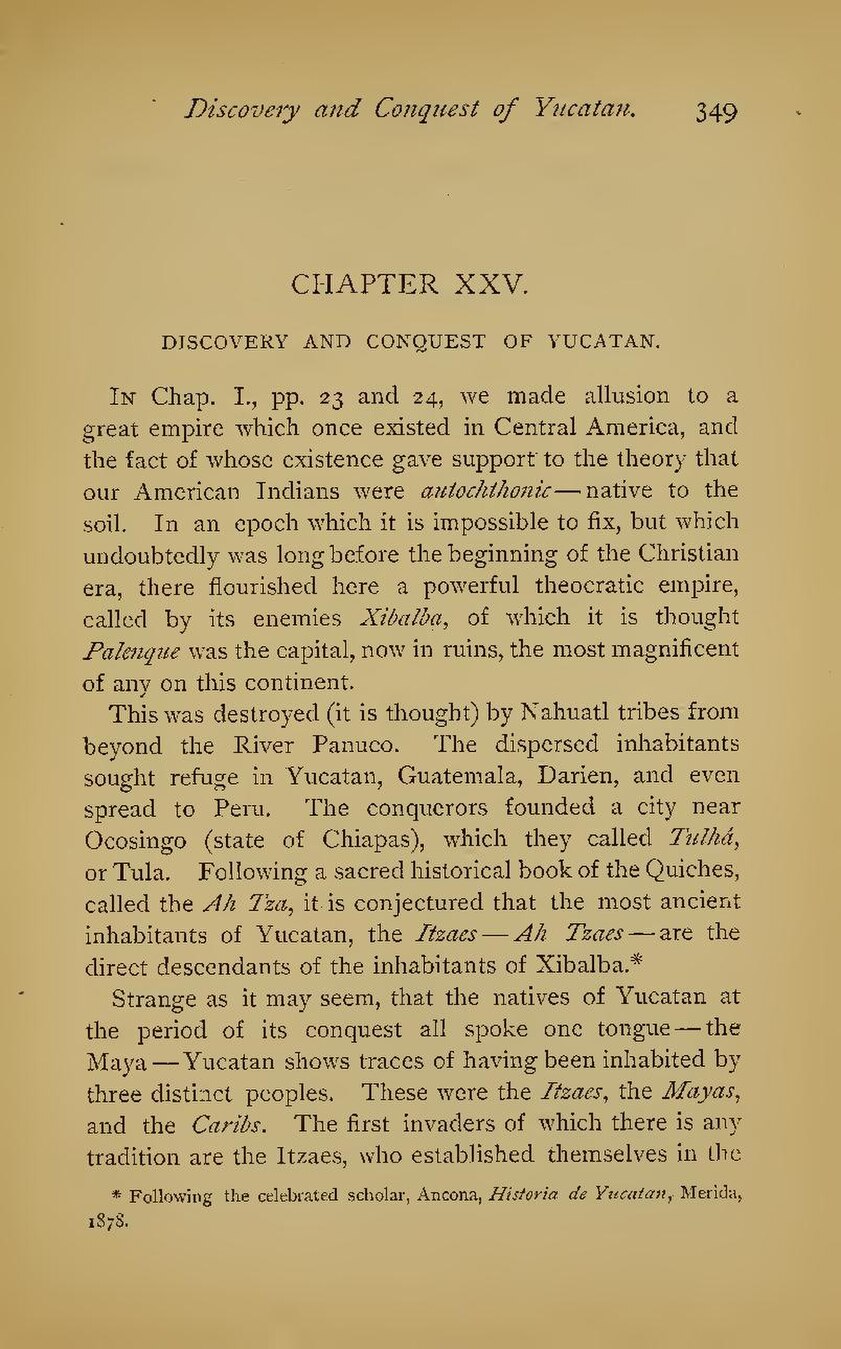CHAPTER XXV.
DISCOVERY AND CONQUEST OF YUCATAN.
In Chap. I., pp. 23 and 24, we made allusion to a great empire which once existed in Central America, and the fact of whose existence gave support to the theory that our American Indians were autochthonic—native to the soil. In an epoch which it is impossible to fix, but which undoubtedly was long before the beginning of the Christian era, there flourished here a powerful theocratic empire, called by its enemies Xibalha, of which it is thought Palenque was the capital, now in ruins, the most magnificent of any on this continent.
This was destroyed (it is thought) by Nahuatl tribes from beyond the River Panuco. The dispersed inhabitants sought refuge in Yucatan, Guatemala, Darien, and even spread to Peru. The conquerors founded a city near Ocosingo (state of Chiapas), which they called Tulhá, or Tula. Following a sacred historical book of the Quiches, called the Ah Tza, it is conjectured that the most ancient inhabitants of Yucatan, the Itzaes—Ah Tzaes—are the direct descendants of the inhabitants of Xibalba.[1]
Strange as it may seem, that the natives of Yucatan at the period of its conquest all spoke one tongue—the Maya—Yucatan shows traces of having been inhabited by three distinct peoples. These were the Itzaes, the Mayas, and the Caribs. The first invaders of which there is any tradition are the Itzaes, who established themselves in the
- ↑ Following the celebrated scholar, Ancona, Historia de Yucatan, Merida, 1878.
